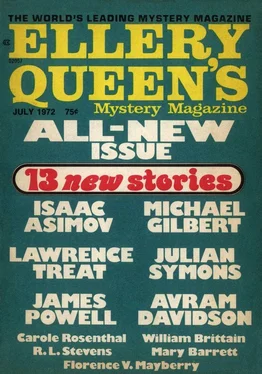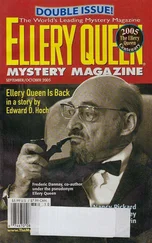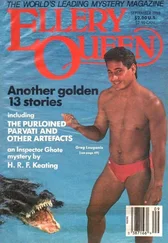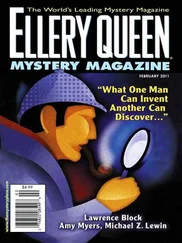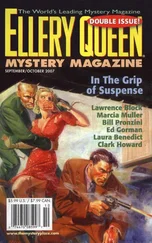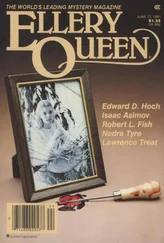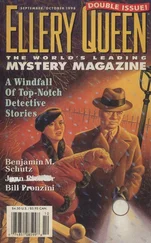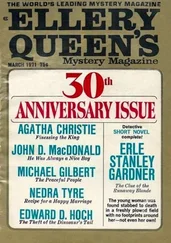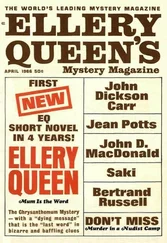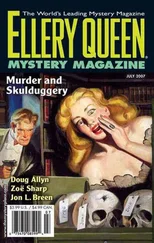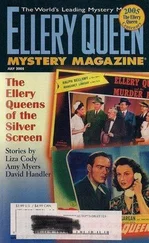Ellery Queen’s Mystery Magazine, Vol. 60, No. 1. Whole No. 344, July 1972
Здесь есть возможность читать онлайн «Ellery Queen’s Mystery Magazine, Vol. 60, No. 1. Whole No. 344, July 1972» весь текст электронной книги совершенно бесплатно (целиком полную версию без сокращений). В некоторых случаях можно слушать аудио, скачать через торрент в формате fb2 и присутствует краткое содержание. Город: New York, Год выпуска: 1972, Издательство: Davis Publications, Жанр: Классический детектив, на английском языке. Описание произведения, (предисловие) а так же отзывы посетителей доступны на портале библиотеки ЛибКат.
- Название:Ellery Queen’s Mystery Magazine, Vol. 60, No. 1. Whole No. 344, July 1972
- Автор:
- Издательство:Davis Publications
- Жанр:
- Год:1972
- Город:New York
- ISBN:нет данных
- Рейтинг книги:4 / 5. Голосов: 1
-
Избранное:Добавить в избранное
- Отзывы:
-
Ваша оценка:
- 80
- 1
- 2
- 3
- 4
- 5
Ellery Queen’s Mystery Magazine, Vol. 60, No. 1. Whole No. 344, July 1972: краткое содержание, описание и аннотация
Предлагаем к чтению аннотацию, описание, краткое содержание или предисловие (зависит от того, что написал сам автор книги «Ellery Queen’s Mystery Magazine, Vol. 60, No. 1. Whole No. 344, July 1972»). Если вы не нашли необходимую информацию о книге — напишите в комментариях, мы постараемся отыскать её.
Ellery Queen’s Mystery Magazine, Vol. 60, No. 1. Whole No. 344, July 1972 — читать онлайн бесплатно полную книгу (весь текст) целиком
Ниже представлен текст книги, разбитый по страницам. Система сохранения места последней прочитанной страницы, позволяет с удобством читать онлайн бесплатно книгу «Ellery Queen’s Mystery Magazine, Vol. 60, No. 1. Whole No. 344, July 1972», без необходимости каждый раз заново искать на чём Вы остановились. Поставьте закладку, и сможете в любой момент перейти на страницу, на которой закончили чтение.
Интервал:
Закладка:
Swithin St. John, who painted the portrait, is Ewald Anders’ half brother. They had the same mother — witness her fondness for the two stilted, exotic names. Swithin, Ewald — what a pair! At any rate, Anders gave Swithin the portrait commission. Over the years Anders had supported his half brother and even arranged for a couple of one-man shows which, for some reason, had been flops. Thus the name of Swithin St. John was hardly known until he did the portrait of Evelyn...
I stare at it in the dim light of the closed gallery. The eyes, gleaming, iridescent, gaze back at me. I want to leave, but I cannot. The painting has a strange obsessive quality, a latent sexuality that somehow the artist’s brush has brought out. I realize that over and above the legend and the publicity that have made the painting notorious it is unquestionably a masterpiece.
I keep asking myself why. What precise quality, what shade or flush of emotion has lifted this portrait out of the ruck and made it so magnetic, so outstanding? For, as surely as I stand here in the empty museum, St. John has communicated something deeply human in Evelyn Anders.
It bothers me. It keeps bothering me. I can’t let it go. I come here at night, not because I believe a painting can tell me anything about a murderer, but because I am haunted by it, by the subject. I stand here and I think of her as if she were still alive. I begin to wish that some harm would come to her — she seems almost to be asking for it — and I have an impulse to lash out and end forever this unnatural spell.
But I do not move away. Instead I turn on my flashlight and slide the beam slowly along the length of her arms. I feel as if I were caressing her, and the thought horrifies me. I focus the light on her painted eyes. They are silvery and lustrous, but they are also tragically sad — as if they had glimpsed her ultimate fate.
Finally I turn away, shaken, for I have learned something I wasn’t supposed to know. But what? What dark secret? Whatever it is, it remains in some lower segment of my brain, pressing in, torturing me, but never coming to the surface.
Back in my office I sit down shivering. I take a drink, but it does no good. I leave the building. Dewey, one of the night watchmen, says good night to me, which is my first normal experience of the evening. It does not help. I go out to my car. Although the night is warm I feel so cold that I turn on the heater as I drive home.
I think of her the next day and I decide I must find out who killed her. Absurd? Of course. I admit it. Nevertheless I ask questions and I set about finding out all I can about her, about her husband and about St. John. The next day I manage to bring St. John to my office and lead the conversation around to Evelyn Anders.
He talks freely. He says she was obsessed with death, that she had little to live for. She had no children to occupy her thoughts and time, and her husband’s extra-marital affairs were too flagrant for her to ignore them. Yet she was dominated by him and felt emotionally suffocated.
St. John breaks off abruptly and taps his fingers nervously on the arm of his chair. He is trying to tell me something that he fears to utter. He wants to blacken Ewald, wants to implicate him in a murder, but dares not. He is secretive, cryptic, oblique.
St. John’s hate is obviously bitter and venomous, but he tries to control it. When he praises Ewald, the words stick in his throat. He manages to say that Ewald has charm, that women fall for him — beautiful women like Marguerita, the Spanish dancer known as La Flama, whose troupe is performing here this season. But in the middle of reciting Ewald’s charm St. John blurts out that La Flama is more in love with Ewald’s money than with Ewald himself.
St. John, I feel, is being pulled in opposite directions. He longs to accuse Ewald, but is afraid to, for Ewald supports him and St. John needs that monthly stipend. Besides, he can’t forget that Evelyn was murdered by a killer who scaled a high wall and climbed a drainpipe in order to reach her room. St. John himself would never be safe. Not if he accused his half brother of murder. But what if the painting itself makes the accusation — is that St. John’s subtle, devious method?
We talk of the portrait. I admire it, I praise its technique, and I say that only a painter who was in love with his subject could have achieved such a masterpiece.
St. John grows livid. “In love with Evelyn? Me?” But the very intensity of his denial convinces me that he was.
He gets up in a fury. He can no longer restrain himself and he spews out his hate. He says Ewald was always sly, shrewd, dishonest. All he ever thought of was money and how to get the better of people. Ever since he and Ewald were children, Ewald managed to put the blame on St. John and take the credit for himself. Ewald lies, steals, kills. Even when Ewald finances exhibitions for St. John, Ewald managed to sabotage them at the same time. He ordered the gallery to cancel its advertising, and he arranged for devastatingly bad reviews.
After a while St. John calms down. He is aware that he has told me either too much or not enough, and he is still fuming when he leaves. I realize he’s playing some kind of deep game, which leaves me in confusion. I decide that Ewald, with his underworld connections, would just as soon have had his wife killed as bother to divorce her. But I’m convinced that St. John had an affair with Evelyn and couldn’t trust her with the secret. And if Ewald found out it would mean the end of St. John’s allowance, if not of his life.
So — did St. John kill her, or did Ewald Anders? And what does La Flama know about it?
I decide I have to see her, so I buy a ticket for her next performance. It is in one of the smaller theaters, and I watch her in fascination. She is wearing black tights. She seems weightless. She whirls across the stage like a living flame, she seems to soar, to float, and she finishes in an amorous swoon. She is beautiful, and at the end of the evening I go to the stage entrance. I send my card in, my official one as curator of the museum, and I’m told that La Flama will see me.
I go into her dressing room. She is sitting in front of her mirror, and she turns around to greet me. I can sense some of the passion and excitement that she conveyed while she was performing onstage, but now it is muted. To my surprise she speaks English with no accent, and I compliment her on it.
“Ewald has had me take lessons,” she says. “He does not like a—” She bites her lip and turns away. She has almost said wife , and is angry at herself for the near slip. “He does not like a friend to have a foreign accent,” she says.
“You have a good ear,” I say. “Even with lessons very few people can wholly overcome an accent.”
“Very few people are like me,” she says imperiously. “I was born a peasant and could neither read nor write until a few years ago. Now — why did you wish to see me?”
“I wondered if you could tell me anything about the portrait that St. John did of Evelyn,” I say. “There are—” She interrupts. “What would I know of that?” she says. “I do not like this conversation. The subject is unpleasant.”
“Exactly,” I say. “And that’s why—”
She interrupts again. “I have no more time,” she says. “Ewald is waiting for me. Please go.”
I leave. I realize I should not have spoken to La Flama. My interest in the portrait is something I should have kept to myself. Evil surrounds that painting, permeates it. I ought not to subject other people to the spell.
I recall the circumstances under which Ewald donated the painting. I knew who he was, because part of my job is to obtain gifts and loans for the museum, and to accomplish that I have to know about every wealthy collector in the country. And Ewald Anders, with his fifty millions or more and a valuable art collection, was a name I knew well.
Читать дальшеИнтервал:
Закладка:
Похожие книги на «Ellery Queen’s Mystery Magazine, Vol. 60, No. 1. Whole No. 344, July 1972»
Представляем Вашему вниманию похожие книги на «Ellery Queen’s Mystery Magazine, Vol. 60, No. 1. Whole No. 344, July 1972» списком для выбора. Мы отобрали схожую по названию и смыслу литературу в надежде предоставить читателям больше вариантов отыскать новые, интересные, ещё непрочитанные произведения.
Обсуждение, отзывы о книге «Ellery Queen’s Mystery Magazine, Vol. 60, No. 1. Whole No. 344, July 1972» и просто собственные мнения читателей. Оставьте ваши комментарии, напишите, что Вы думаете о произведении, его смысле или главных героях. Укажите что конкретно понравилось, а что нет, и почему Вы так считаете.
